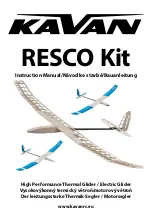
72
Takeoff
Before every takeoff, the pilot should plan for an engine failure in the context of existing
takeoff conditions.
The most critical point for an engine failure is the takeoff and departure. Preflight
planning must consider this possibility. If an engine fails on takeoff, the choices are to
abort or continue. AFM takeoff performance data tells the pilot what performance
margins are available considering gross weight, density altitude, runway length, wind
and obstructions. Other factors to consider are weather and terrain. If the single engine
climb performance for a T/O flaps takeoff is unacceptable, consider flaps UP takeoff for
better single engine climb performance as long as there is sufficient runway available
for the longer takeoff roll.
If an engine failure occurs before liftoff, with sufficient runway remaining, the takeoff
should be aborted and the airplane brought to a stop.
Following an engine failure during takeoff with a decision made to continue, confirm the
throttles to max and APR ON, apply appropriate rudder for coordinated flight while
lowering the nose slightly to continue acceleration. Landing gear should be retracted
normally at positive rate of climb. Maintain a minimum airspeed of V
50
. Climb straight
ahead (conditions permitting) to 400’ AGL or obstacle clearance, whichever is higher.
At that point, if a T/O flaps takeoff was conducted, retract flaps to UP and accelerate to
the flaps UP Vyse. When above 1,000’ AGL consider engaging the autopilot and
executing the appropriate checklist.
Your first consideration should be to return to the departure airport unless returning is a
poor option (e.g., poor weather at the departure airport, high terrain etc.).
See diagram for engine failure after takeoff profile.
Planning for an engine failure should include a planned flight path after takeoff. This
may be dictated by the presence of terrain and obstructions. Density altitude, terrain
and obstacle factors could be such that commitment to an off-airport landing may be
required.
If performance conditions are marginal or unacceptable, the pilot may have several
options to mitigate this risk:
•
Consider a flaps UP takeoff for better single engine climb performance
•
Plan departure under more favorable conditions.
•
Reduce the fuel and / or cabin load.
•
Cancel the flight.
NOTE













































